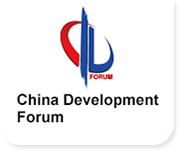Focusing on the Health of China’s Working-Age Population to Improve Social Productivity
Pfizer
Executive Summary
China is currently facing a new phase of economic growth and the need to address the challenges posed by its changing demographic. As China’s economy transitions from a period of rapid expansion to one of high-quality development, upgrading its industrial structure and encouraging a shift from old to new growth drivers are essential. At the same time, China’s demographic structure is characterized by a sub-replacement fertility rate, an aging society, and varied population growth across regions. The total population is trending downward, shifting from incremental growth to gradual overall decline. In the face of this new normal for population development, the first meeting of the 20th Central Financial and Economic Commission placed a strong emphasis on understanding and correctly evaluating the shifting dynamics of China’s population growth. President Xi Jinping stated in an editorial titled “Supporting Chinese-style Modernization with High-Quality Population Development” that “the demographic dividend is not only related to the number and structure of the population, but also to the quality of the population, economic policies, and supporting measures.” High-quality development requires a high-quality population and work force, driving high-quality economic growth through the enhancement of human capital.
Under this new normal for population development and new era of high-quality economic development, health is an important factor in measuring population quality. China’s main health indicators have shown a positive trend of improvement following the epidemic. The average life expectancy in the country has reached 78.2 years, and other key health indicators now surpass the average for upper-middle-income countries. Although the overall quality of China’s population is improving, there are still regional and demographic imbalances, and there is room for improvement when compared to leading developed countries.
With the aim of proactively adapting to the new normal for population development, the first meeting of the 20th Central Financial and Economic Commission emphasized “focusing on improving the overall quality of the population as a means to support Chinese-style modernization with high-quality population development.” The Outline of the Fourteenth Five-Year Plan for National Economic and Social Development of the People’s Republic of China and the Vision for 2035 underscored the need to “build a comprehensive and full-cycle health system” in order to “optimize the demographic structure, expand the demographic quality dividend, and improve human capital and people’s capacity for comprehensive development”.
To fully realize the population quality dividend, it is crucial to further improve the health of the populace. With the implementation of the “Healthy China” strategy, China has laid out the goal of enhancing the health of its entire population, with a particular focus on working-age population. The Outline of the “Healthy China 2030” Plan emphasizes that ensuring the health of the entire population is the core goal of building a healthy China. As China plunges deeper into its demographic transition and enters the next phase of the Healthy China Initiative, efforts should focus on improving the health of the working-age population. To further solidify progress made in disease control and prevention, China should consider focusing on diseases that place a heavier burden on the working-age population and incur higher societal costs, ensuring that China can sustainably develop and harness the “demographic quality dividend.” Migraines are a prime example, as they are highly prevalent amongst the working-age population and have become a significant impediment restricting the productivity of China’s labor force and socio-economic development.
To realize the goal of health for all as soon as possible, China should place a heightened focus on migraines and other diseases that are highly prevalent among the working-age population. Reducing the impact of these diseases on working-age people can be accomplished by upgrading diagnostic and treatment capabilities, strengthening patient education, and accelerating the introduction of innovative therapeutic drugs.
As an active practitioner of “in China for China,” Pfizer is committed to supporting the implementation of the Healthy China strategy. To improve China’s ability to address the growing burden of migraines, Pfizer proposes the following three recommendations for future policy actions:
Download the full report:Focusing on the Health of China’s Working-Age Population to Improve Social Productivity

